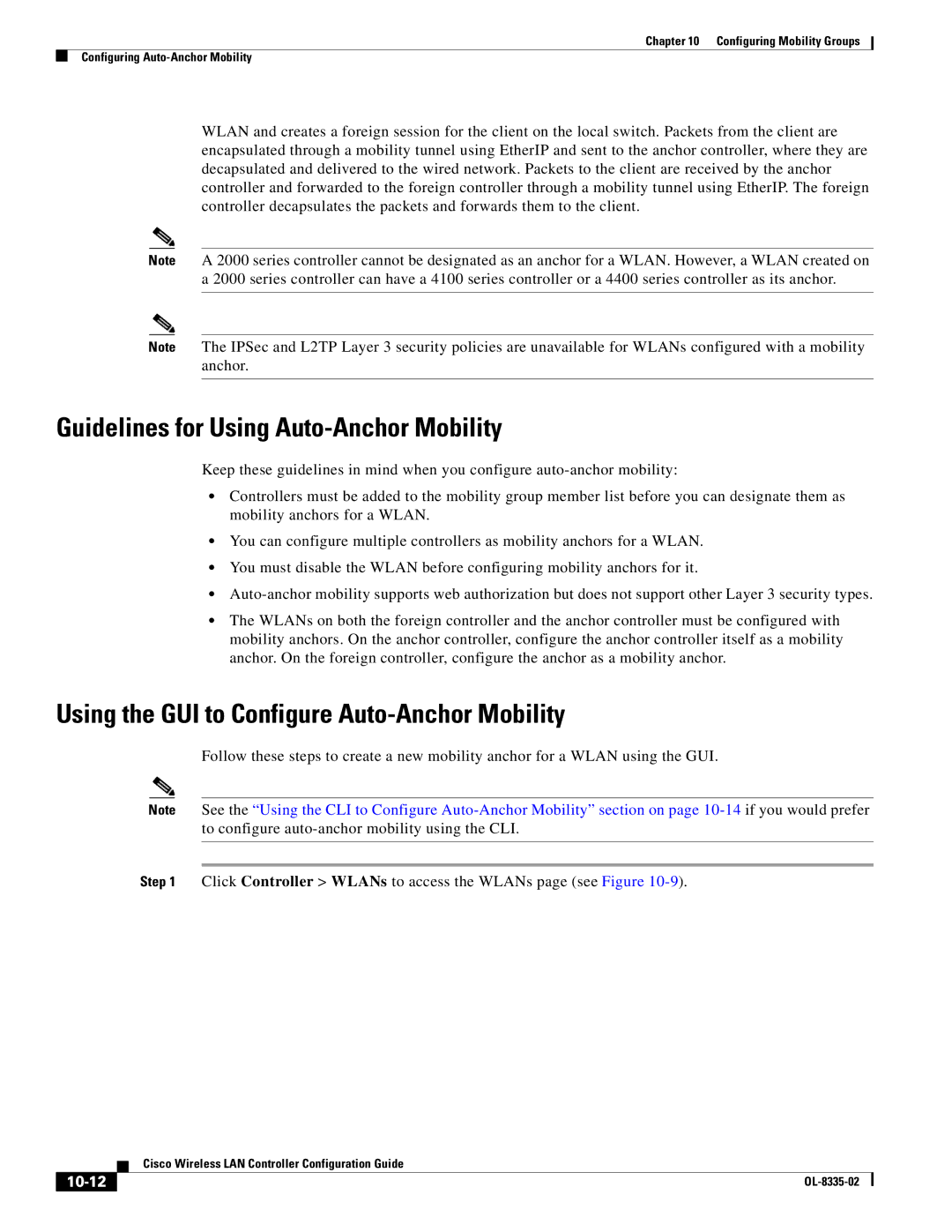
Chapter 10 Configuring Mobility Groups
Configuring
WLAN and creates a foreign session for the client on the local switch. Packets from the client are encapsulated through a mobility tunnel using EtherIP and sent to the anchor controller, where they are decapsulated and delivered to the wired network. Packets to the client are received by the anchor controller and forwarded to the foreign controller through a mobility tunnel using EtherIP. The foreign controller decapsulates the packets and forwards them to the client.
Note A 2000 series controller cannot be designated as an anchor for a WLAN. However, a WLAN created on a 2000 series controller can have a 4100 series controller or a 4400 series controller as its anchor.
Note The IPSec and L2TP Layer 3 security policies are unavailable for WLANs configured with a mobility anchor.
Guidelines for Using Auto-Anchor Mobility
Keep these guidelines in mind when you configure
•Controllers must be added to the mobility group member list before you can designate them as mobility anchors for a WLAN.
•You can configure multiple controllers as mobility anchors for a WLAN.
•You must disable the WLAN before configuring mobility anchors for it.
•
•The WLANs on both the foreign controller and the anchor controller must be configured with mobility anchors. On the anchor controller, configure the anchor controller itself as a mobility anchor. On the foreign controller, configure the anchor as a mobility anchor.
Using the GUI to Configure Auto-Anchor Mobility
Follow these steps to create a new mobility anchor for a WLAN using the GUI.
Note See the “Using the CLI to Configure
Step 1 Click Controller > WLANs to access the WLANs page (see Figure
| Cisco Wireless LAN Controller Configuration Guide |
|
